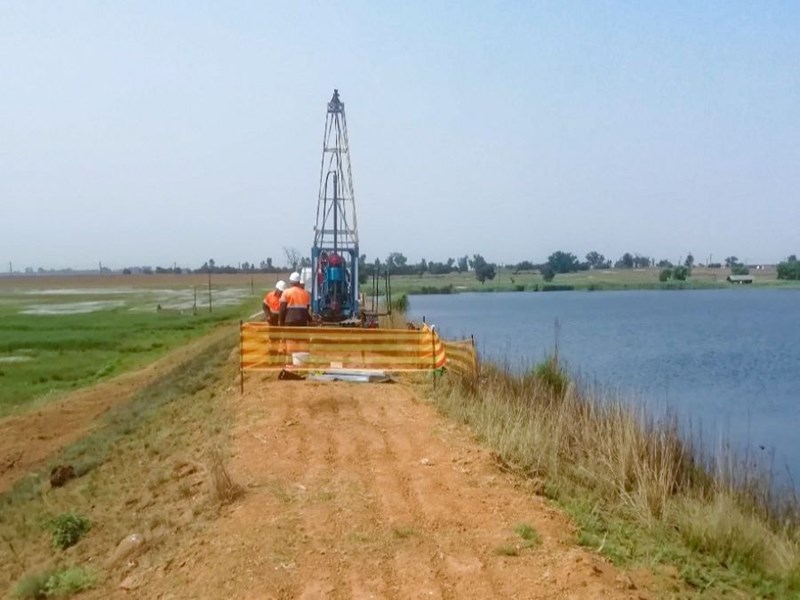Dam Betterment

In May 2022, the Geomech Africa team kicked off a project where they needed to conduct DPSH (Dynamic Probing Super Heavy) testing as part of a Geotechnical Investigations contract for a client. These tests needed to be completed in order to establish the stability of a structural wall and to identify any risks present.
The Dynamic Probe Super Heavy (DPSH) test is a geotechnical investigation method used to determine soil properties such as soil density, shear strength and bearing capacity. The DPSH test uses a hammer weighing 63,5kg which is dropped from a height of 760mm. The equipment includes the rig, the cone tip, and the extension rods. The hammer is hollow in the centre to allow it to slide up and down through the extension rods. For accurate readings, there is an upper and lower anvil that needs to be in place to ensure that the hammer does not exceed the 760mm height while the lower anvil limits the hammer to not go past the 0mm rest level. The test involves recording the blow counts per 300mm penetration into the soil. The results obtained from this test can be used to correlate to the Standard Penetration Test (SPT) because it uses the same hammer weight and drop height. The test was designed to provide a rapid tool and economical method of assessing the penetration resistance of the ground and continuous profile of ground resistance with depth. Various quantities of DPSH tests were conducted on 3 dam walls providing sufficient data for the engineers. A combination of DPSH, rotary core drilling and wash boring, as well as CPTu was used in the overall investigation.
Initially, the teams did experience some delays during the onboarding procedure at the mine. Onboarding is essential to our crews, as it allows our staff to familiarise themselves with the mine’s rules, policies, and procedures. This important step, in itself, is key to eliminating unnecessary risk factors. Once completed, the crews were ready to commence work on site.
Logistically, the crews faced some challenges getting the rigs into position. In order to gain access to these positions, the crew had to use a TLB to clear the way for the crews and equipment. Once the road was cleared, the team had to make use of a Land Cruiser to assist with pushing the rig into position as the access was too narrow for the flatbed truck to reverse into place.
Because the crews were working near and on a dam, each Geomech Africa employee had to wear a life jacket at all times to ensure that the working conditions remained safe.
At the end of the day, this was another successful project with no injuries to report. The client was happy with the outcome and the results of the project.
Plot 28 Central Road
Sunrella, Lanseria
Gauteng
South Africa
Tel. +27 (0)11 966 7760
Fax. +27 (0)86 663 3896
Email. info@geogroup.co.za
